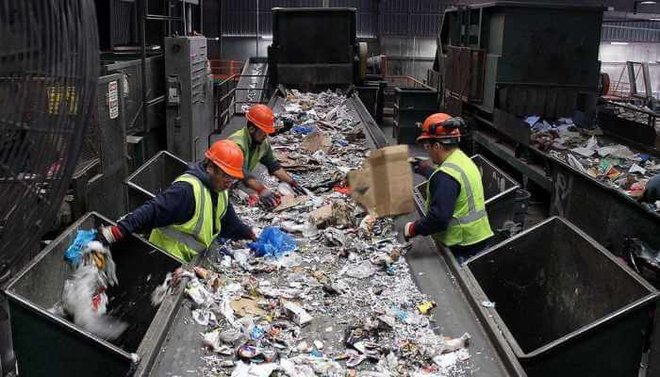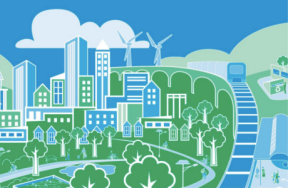How it Works: Recycling | Get The Facts On How It Works & Doesn't Work
Fine out what you can do to help make sure your trash doesn’t cause a problem for your generation or those that come after you.
Oct 11, 2019Welcome to our monthly feature, How It Works, where we deep-dive into a topic that affects your everyday life. Let us know in the comments below if this article has helped you with a school project or if it’s changed your life in any way!
This month, we’re talking about recycling. Did you know that an average person generates over 4 pounds of trash every day and about 1.5 tons of solid waste per year? Some people throw everything into the trash while others make the attempt to recycle everything. Still others work hard to reduce their waste so that very little of what they consume has to be thrown away or recycled. Which of those profiles fits you best?
A Day in the Life of Your Garbage and Recyclables
Throwing things in the trash is not as easy as it seems. This video from the recycling plant at Sunnyvale, California in the San Francisco Bay area shows what happens to trash as it goes from garbage truck to recycling sorter and landfill.
Many cities have adopted a single stream recycling program like the one shown in the video above, where trash collectors take all of the waste from all of the homes and transport trash and recyclables together to an MRF, or Material Recovery Facility. This method was adopted in order to maximize the amount of materials recycled. At the MRF, materials are sorted by a combination of sanitation workers and machines to rip open trash bags, sort out compostable material, sort through recyclable items, and pack the remaining items into trash hauling vehicles to either be burned and used as fuel, taken to a landfill, or transferred to another waste handling facility.
 At one MRF, workers pull plastic bags, other trash and large pieces of cardboard off the conveyor belts before the mixed single-stream recyclables enter the sorting machines.Courtesy of NPR
At one MRF, workers pull plastic bags, other trash and large pieces of cardboard off the conveyor belts before the mixed single-stream recyclables enter the sorting machines.Courtesy of NPR
According to the environmental protection agency (EPA), 75% of the American waste stream is recyclable, but we only recycle about 30% of it. A report from Yale university gives even worse statistics. Before 2018, “only 9 percent of discarded plastics were being recycled, while 12 percent were burned. The rest were buried in landfills or simply dumped and left to wash into rivers and oceans.”
Where do recyclables go next?
That’s the big, bad question of the post-2018 world. Before 2018, recycling plastic was a huge industry, with China taking the lead on importing most of the world’s trash and turning it into recycled treasures. Most US recycling plants required residents to separate and clean their trash to prepare it for recycling. It was more cost-effective and easier to ship it over to China, where their equipment was more qualified to handle recyclables that had been collected through a single-stream recycling process -- where consumers like you can throw away all of your trash in one place and let the machines sort it out. While this was really efficient for the rest of the world, slowing landfill growth and letting us feel good about using plastic straws and drinking bottled water, China wrestled with a new problem. Soiled and contaminated plastic materials overwhelmed the Chinese recycling facilities, creating a whole new environmental problem. In January of 2018, China told the world it wasn’t going to take any more of its hand-me-down garbage, adopting what they called their “National Sword” policy. 99% of the plastic China used to take in is now clogging other countries’ recycling plants and landfills.
Before the ban, “95 percent of the plastics collected for recycling in the European Union and 70 percent in the US were sold and shipped to Chinese processors,” according to an article in Wired magazine. That leaves a whole lot of trash unaccounted for that’s destined for the landfill or the bottom of the ocean.
 Even wrapped in a pretty bundle, this trash is no treasureCourtesy of Ezequiel Becerra
Even wrapped in a pretty bundle, this trash is no treasureCourtesy of Ezequiel Becerra
What you can do about it
The Container Recycling Institute (CRI) estimates that the 36 billion aluminum cans landfilled last year had a scrap value of more than $600 million. If you collect all of the cans your family uses and bring them to a local recycling center, you not only send them directly to processing, you could also make some cash in the process. “My teenage son saves all our cans and plastic,” one parent mentioned on a local neighborhood website. “Last time he got about $90 for seven months worth of stuff.” Enter your zip code into the form at RecyclerFinder.com to find recycling centers near your home.
Fast Facts: Recycled plastics
- 8300 metric tons of plastic were created between 1950 and 2015
- 30% metric tons of that plastic is currently in use
- 9% of that plastic was created from recycled material
- 10% of that plastic was recycled more than once
 We aren't recycling nearly as much as we think we areCourtesy of Science Magazine
We aren't recycling nearly as much as we think we areCourtesy of Science Magazine
A 2017 report in the journal Science Advances provided the above diagram documenting how much plastic has been recycled compared to how much was produced from 1950, when mass produced plastics were introduced, until 2015. The diagram shows that of the 8300 metric tons of plastics that had ever been produced, only 30% are still in use, and only 600 metric tons of plastic, or 9% of all plastic ever created, is in use after having been recycled. Only 10% of that, or 60 metric tons, has been recycled more than once. The figure also shows that approximately 4900 metric tons of all plastics ever produced is either piling up in landfills or polluting our land and water.
Fast facts: What you can create from recycling
- Recycling one aluminum can saves enough energy to listen to a full album on your iPod. Recycling 100 cans could light your bedroom for two whole weeks, according to DoSomething.org.
- Further, on average, one person has the chance to recycle 25,000 cans in their lifetime, according to Recycle Across America.
- As a whole, every hour, Americans send 2.5 million plastic bottles to landfills, and every five plastic bottles can create sufficient fiber for one square foot of carpet.
- A glass container can go from a recycling bin to a store shelf in as few as 30 days.
The Dirt on Composting
Americans generate 21.5 million tons of food waste each year. When food waste is tossed into the landfill, it doesn’t just take up space in a landfill. Trapped in plastic, food waste decomposes and releases gasses into the atmosphere, contributing to air pollution. Compost cuts down on landfill bulk and gas, and returns food to its most natural, reusable form. You can learn more about composting in this article on Mic.com, but if you’re really interested, let us know in the comments below and we can devote a future How it Works column to composting!
How you can help
When items do get recycled, it takes a lot of energy to transform the waste into something that can be reused. The best thing you can do is reduce the waste you create in the first place.
- Start composting at home and even at school
- Collect your family’s recyclables and bring them to a local recycling facility. Some local facilities will actually pay you for your scraps!
- Carry reusable water bottles when you’re on the go
- Don’t stop at reusable water bottles. Bring your own eating utensils and reusable straws so you can say no to the plastic ones when you eat out
- Use reusable straws made of metal, hay, compostable plant-based materials, and paper
- Pack zero waste lunches by packing your lunch in reusable containers instead of plastic wrap, aluminum foil, and baggies.
- Start a program through your school to create zero waste days or weeks at school where you can educate fellow students and even offer rewards for doing the eco-friendly thing
- As a school project, conduct a plate waste study in the lunchroom, cataloguing how much food and trash gets thrown out, then report it to the school cafeteria staff to help optimize their lunch offerings
Have Your Say
Tell us your thoughts on recycling, landfills, and composting. Doyou have any tips on how to reduce, reuse or recylce? Share them in the comments below, and don’t forget to let us know what you’d like us to focus on in a future How it Works column here at Kidzworld!

































